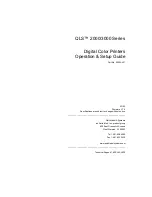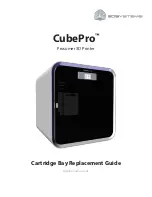
Programming Codes
T480
Programmer’s Guide
Page
50
Rev A
100-14362
[ESC] P
Begin rotated font/Right to left entry
ASCII
[ESC] P <n>
Hexadecimal
1BH 50H <n>
Decimal
<27> <80> <n>
IPCL
&%RI {n=2}
&%RF {n=1}
&%RN {n=0}
EPOS
[ESC] V <n>
Description
The [ESC] P <n> command sets the print font to a rotated 90
or 270
font.
Where n
n = 0 Normal
n = 1 Rotate 90
n = 2 Rotate 270
n = 8 Enter Text right to left
n = 9 Enter Text right to left and Rotate 90
n = 10 Enter Text right to left and Rotate 270
Character Sets and Code Pages
The EPIC 3000 Printer is primarily intended to be used in Unicode based systems.
However to provide legacy support, the printer supports 8 bit and double byte ASCII
encoding with code pages.
When not using Unicode or double byte encoding, the printer is restricted to the 8 bit
ASCII character set. To support international languages, the characters that are
assigned to each of the 256 possible locations can be remapped to any character in the
Unicode standard. Typically, the first 32 characters are reserved for control characters.
The next 72 are typically fixed to alpha numeric and punctuation. The upper 128
characters are typically redefined to characters that support the specific language or
country. These mappings are generally referred to as codepages.
The EPIC 3000 provides several legacy commands to select a country code or
codepage maps. However, they all simply select an ASCII to Unicode translation map.
Several predefined mappings to provide legacy support are internal to the printer, but the
majority of the maps are placed in the printer’s file system. This allows any preexisting
codepage mapping to be defined as well as the ability to define custom mappings unique
to your application.
Note: Note:
If UTF encoding is active code pages are not meaningful.
Code page commands will have no affect on the character addressing.
Codepage description files
The format of the codepage description file is somewhat flexible. The basic format is
that each line will specify an ASCII character ID and the Unicode character that is to
appear in that ASCII ID location.
















































